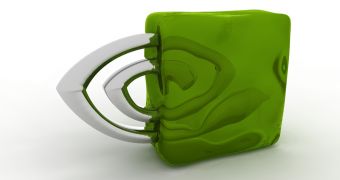NVIDIA’s sparring with Intel has been well publicized in the last few years. NVIDIA claims their GPUs do a much better job than Intel’s FPUs and Intel is fighting back with better iGPUs and software integration.
Ever since Intel decided not to allow NVIDIA to make chipsets for their new-generation CPUs some years ago and then basically shut NVIDIA’s solutions out of their market as Intel’s own CPUs gained GPU capabilities, the two companies have been involved in a serious boxing match.
In the dawn of the first battle, NVIDIA even got a 3 billion dollar payment from Intel and then both signed an agreement. So there is serious friction between the companies.
Now, NVIDIA’s Jen-Hsun Huang has been quoted by HotHardware as saying, “Why not be a foundry for all the mobile companies? There’s no shame in that!” Of course, Intel has started manufacturing chips for third party chip designers as they have huge manufacturing capacity and it shouldn’t go idle.
But these chip designers, that are using Intel’s fabs, are mostly FPGA builders and they are in no direct competition with any of Intel’s products.
Companies like Achronix and Tabula build FPGAs (Field Programmable Gate Arrays) are not in the same market with Intel’s Atom line of products while NVIDIA’s Tegra line is a direct competitor and a very successful one at that.
The Tegra designs usually surpass most of the capabilities displayed by their Intel counterparts. Either their graphics processing is better or their power consumption is lower and, most importantly, they’re not held back by the x86 instruction set.
Most industry insiders believe that Intel is not doing it for the money, but rather to keep close any technology or IP that might be interesting for them to license or to acquire.
With Oualcom’s new Krait design and NVIDIA’s new Tegra 3 / 4 + 1 , Intel could never let all those billions invested in the Atom project go to waste and start building better performing parts designed by its competitors.

 14 DAY TRIAL //
14 DAY TRIAL //